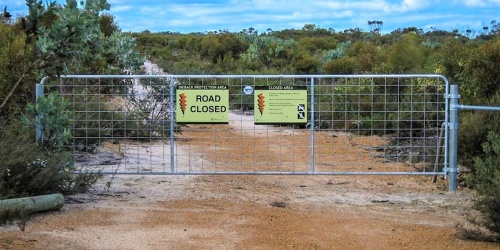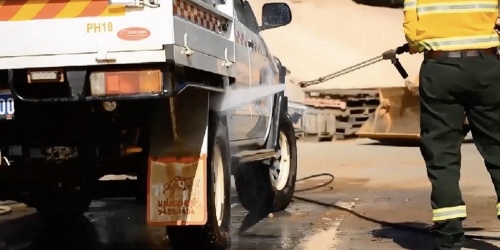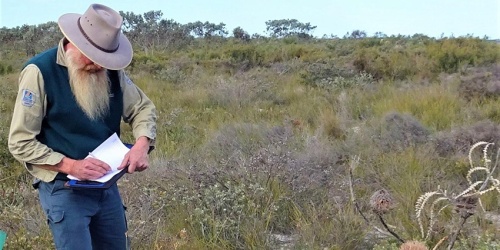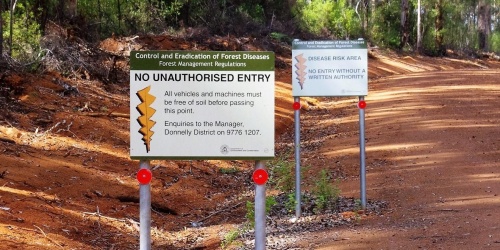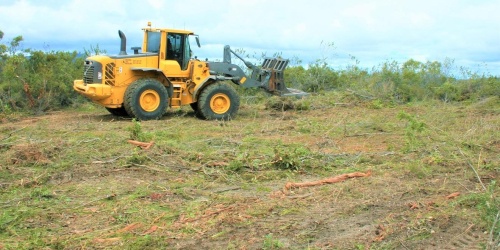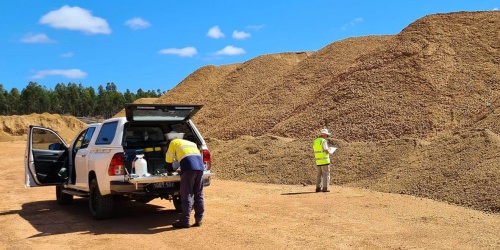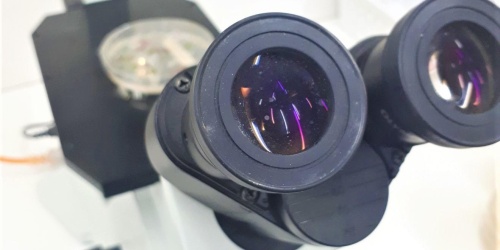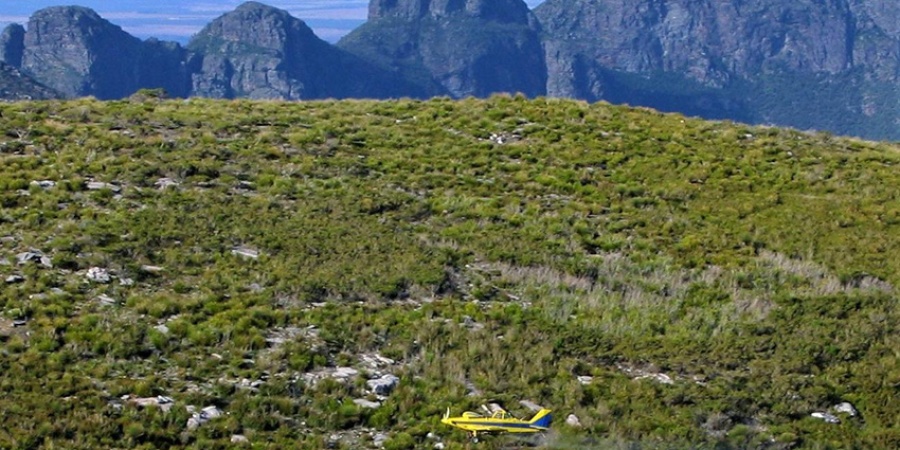
View of plane flying over Bluff Knoll spraying phosphite
Phytophthora cannot be eradicated from a site once it becomes infested*. The only chemical treatment currently available for Phytophthora dieback (dieback) is phosphite, a systemic, non-hazardous and biodegradable fungicide. At the rates used for the treatment of dieback in native ecosystems phosphite does not kill or eradicate Phytophthora, rather it is believed to suppress the pathogen and boost the plant’s natural defence responses to infection.
Phosphite, also known as phosphorous acid, or phosphonate, is a systemically-applied liquid fungicide developed for the control of Phytophthora diseases. Not to be confused, phosphite is a variation of phosphate - the plant-available form of phosphorous essential for plant growth.
History of phosphite use
Phosphite has been used since the 1970s for the management of Phytophthora diseases in agriculture, forestry and natural ecosystems within Europe, the United States, New Zealand and Australia. In the late 1980s, the department began research into the use of phosphite in Western Australian plant species and found that injection of phosphite into the stems of jarrah (Eucalyptus marginata) and several banksia species afforded protection against dieback. This early success sparked a decade of research, which included field trials ranging from the northern sandplain near Eneabba to the Fitzgerald River National Park on WA’s south coast. The department holds an Australian Pesticides and Veterinary Medicines Authority (APVMA) permit to allow minor use of phosphite for the control of Phytophthora in native vegetation.
Aerial application of phosphite to native plant communities was trialled for the first time in 1993 near Albany and proved successful. Aircraft allows for the rapid treatment of entire plant communities and are suitable for areas where ruggedness of the terrain would make ground application prohibitively expensive. Today, aerial application is the primary phosphite application method used by the department.
The department's phosphite program
The focus of the department’s aerial spraying program is the protection of high priority flora and ecological communities at high risk of extinction due to dieback. This includes Banksia montana, Daviesia glossosema and Andersonia axilliflora species in the Stirling Range; the Busselton Ironstone Threatened Ecological Communities (TECs); and Eastern Stirling Range Montane Heath and Thicket TECs.
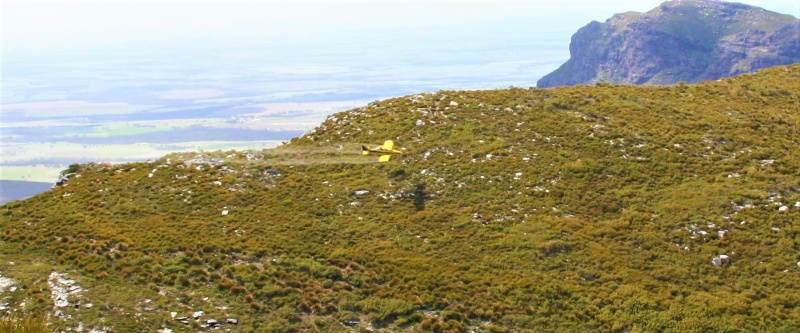
What phosphite does
Phosphite has been shown, through a study of phosphite treated plant communities** on the south coast of WA, to help maintain the functionality of infested areas. It achieves this by mitigating the impacts of dieback on vegetation structure and by enhancing the survival of key species, with no measurable adverse effects of the treatment. The study found that:
- on infested and untreated sites, dieback significantly reduced cover in the upper and lower shrub layers and increased sedge and bare ground cover. 17 of 21 species assessed from the Ericaceae, Fabaceae, Myrtaceae, and Proteaceae families were significantly less abundant in these sites;
- on infested and phosphite treated sites, loss of shrub cover, bare ground and sedge cover was significantly reduced, and species assemblages were more like uninfested sites than untreated infested sites.
Maintaining the dieback control benefits of aerially-applied phosphite requires a repeated application about every two years. This calls for a significant and ongoing commitment of resources.
Dieback control from stem injection with phosphite can last up to five years. Stem injection, along with other on-ground application methods such as backpack spray, and vehicle-mounted tank & pump spray, are suited to smaller areas and are more commonly practised by community groups.
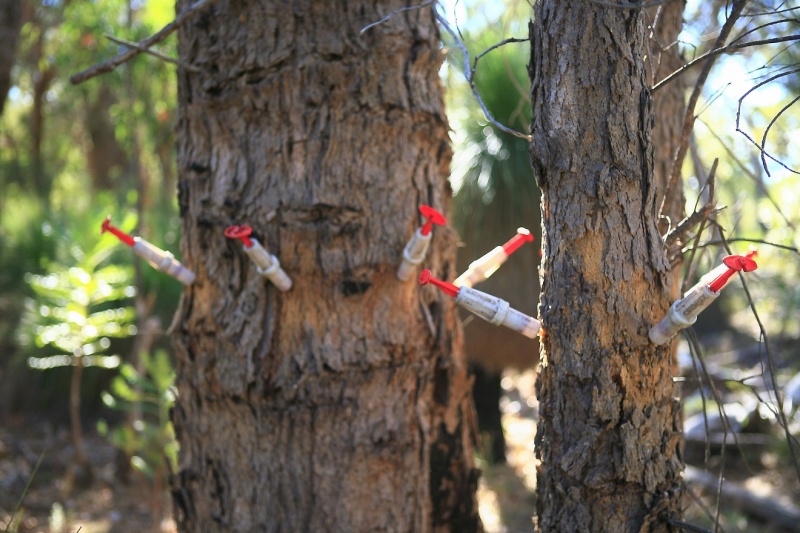
Phosphite cannot eradicate Phytophthora from an area once it has established, but it does provide us with some ability to slow the decline of threatened species that might otherwise become extinct in the wild. Phosphite needs to be part of a larger dieback management strategy that limits the introduction and spread of Phytophthora through quarantine and hygiene and further preserves highly threatened values through translocation and seed conservation.
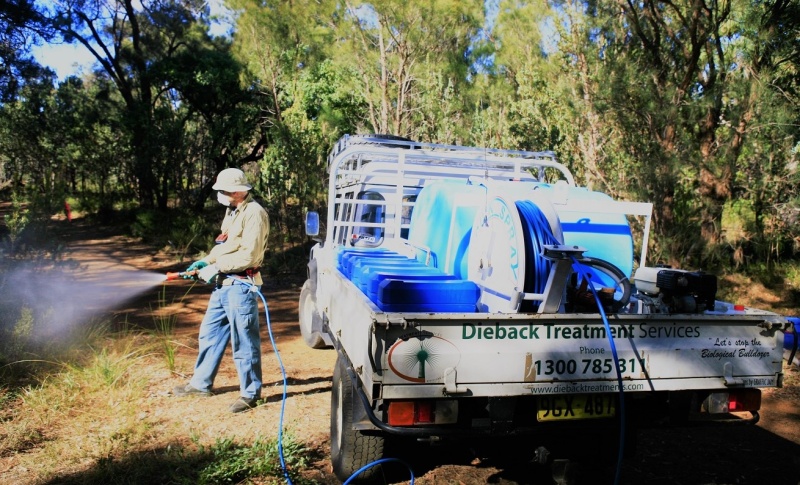
Phosphite being sprayed onto foliage by a contractor. Photo - DWG Inc.
*Experimental trials have shown some success in eradicating the disease, but only in very specific circumstances and using drastic and destructive methods. See Dunstan et al, 2010.
**the study focused on plant communities that had been treated for between 7 and 16 years with phosphite. See Barrett and Rathbone, 2018.
